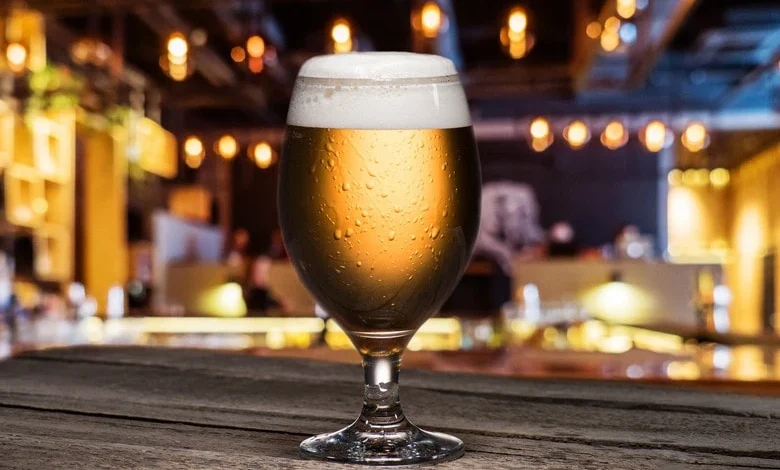Budapest beer – the „must try” Hungarian beers all around the country

Dive into the exceptional flavors of Hungary’s most beloved beers, including the likes of Arany Ászok, Soproni, Dreher, Borsodi, and Pécsi Szalon. Explore esteemed breweries and cherished local beer spots.
Experience the finest Hungarian beer just as you like it! The journey of commercial brewing in Hungary began in 1845 with the establishment of its first brewery in Buda by Peter Schmidt. During the Austro-Hungarian Empire era, Budapest’s Kőbánya district emerged as the hub of the Hungarian beer industry. The Dreher Brewery, founded by Anton Dreher in 1862 in Budapest, is renowned for pioneering the Vienna lager and significantly shaping the Hungarian beer scene post-World War II.
Presently, Hungary is home to four major breweries, predominantly producing light lagers (“világos”) and German-influenced dark beers (“barna”). It’s a cultural norm in Hungary to refrain from clinking glasses or mugs while enjoying beer. Intriguingly, there’s a widespread yet debunked belief that the tradition stems from Austrian generals toasting with their beer glasses over the execution of the 13 Martyrs of Arad in 1849. While many continue to observe this custom, the younger generation often overlooks it, pointing out that the original pledge was meant to end after 150 years.
Budapest beer – a toast to health and heritage!
While Hungary is often celebrated for its wine, it’s a lesser-known fact that its beer also carries health benefits, suggesting that our forebears might have been familiar with beer even before wine. Historically, Hungarian law permitted landowners the right to brew beer, a practice that was embraced by both monasteries and guilds until the dawn of industrial brewing in the mid-19th century. The quality of Hungarian beer is attributed to its four fundamental ingredients: malt, hops, yeast, and water, which collectively define the beverage’s flavor, hue, and potency. Let’s see the best of the Hungarian beers!
Also Read: Red or White: 7 Surprising Health Benefits of Drinking Wine
The „golden” Hungarian beer: Arany Ászok
Launched in 1924 and nationalized in 1948, the Arany Ászok brand resumed production in 1989, over four decades later. Known for its lighter, robust profile, Arany Ászok features a subtle, clean scent. It offers a slightly bitter and malty taste with minimal aroma, complemented by a smooth texture. It boasts excellent foam retention and carbonation, with an alcohol volume of 4.3%. The beer also comes in non-alcoholic, semi-dark, lemon, and blood orange varieties.
The bright side of life: Borsodi
Borsodi, a household name since its debut in 1973, revamped its image in the mid-90s and is celebrated as Borsodi Világos. This pilsner-style light beer, with an alcohol content of 4.5%, is known for its refreshing bitterness and sparkling golden hue. Borsodi also offers a non-alcoholic version, along with the higher-alcohol Buffalo and an assortment of fruity, wheat, and “short” flavor options.
The world is only as much as you put into it: Dreher
Dreher is a classic Hungarian beverage. Favored by the older people, Dreher Classic stands out with its alcohol volume of 5.2% V/V, surpassing the strength of the previously mentioned beers. The formula, a brainchild of Antal Dreher, reached its pinnacle in the late 1980s, crafted according to his precise directions. Its notable bitter flavor comes from the blend of two hop varieties, offering a balanced medium body with a subtle hoppy scent. The beer presents a golden yellow hue, with ample carbonation and froth. Presently, there are three Dreher varieties available: the original Classic, the citrus-infused Dreher Summer Moments, and the distinct Dreher Bak.
If you’re in the mood for another Hungarian speciality, try the delicious chimney cake in addition to the beers!
Kürtőskalács for everyone!
If you’re torn between choosing a chimney cake or ice cream, Töltött Kürtős kiosk will be a hit with you, offering ice cream scoops in sweet pastry cones. You can also choose cones filled with combinations like strawberry and whipped cream, Nutella and whipped cream, or chocolate-banana. This kiosk doesn’t stay in one place but is often found at Christmas markets and street food festivals in Budapest. Get ready for a delightful sugar rush!
Hoppácska – creatively designed street food
If you’re still hungry, Hoppácska offers both sweet and savory chimney cakes topped with a variety of traditional and unique flavors. The freshly baked cake acts as an edible dish for a complete meal, featuring options from sweet chocolate cream and fruit to savory Hungarian lecsó or spicy meatballs. With a steady menu of three savory and two sweet choices, they introduce new flavors weekly to keep things exciting.
Make your own kürtőskalács at home!
Making chimney cake at home can be a fun and rewarding experience. Here’s a simplified recipe to help you prepare your own chimney cakes. Note that traditionally, these cakes are baked on a rotating spit over an open flame, but you can achieve good results in a home oven with the right approach.
Ingredients: 500g all-purpose flour, 50g sugar, 250ml milk (warm), 2 teaspoons dry yeast, 2 eggs, 50g melted butter, a pinch of salt, 1 teaspoon vanilla extract.
For the topping: 100g melted butter (for brushing), 200g sugar, 2 tablespoons ground cinnamon. Optional: ground walnuts, coconut shreds, or cocoa powder.
Equipment: a thick rolling pin or a cleaned wine bottle for baking; an oven.
Instructions
Dough Preparation:
In a bowl, dissolve the yeast in warm milk with a teaspoon of sugar. Let it sit for about 5 minutes until it becomes frothy.
In a large mixing bowl, combine the flour, the remaining sugar, and a pinch of salt.
Add the frothy yeast mixture, melted butter, eggs, and vanilla extract to the dry ingredients. Mix until a smooth dough forms.
Knead the dough on a floured surface until it’s elastic, about 5-10 minutes.
Place the dough in a greased bowl, cover with a cloth, and let it rise in a warm place until it doubles in size, about 1 hour.
Shaping and Coating:
Preheat your oven to 180°C (350°F).
Punch down the dough and divide it into 4 equal parts.
Roll each part into a long, thin rope, about 1.5 cm in diameter.
Wrap the dough ropes tightly and evenly around the wine bottle, slightly overlapping the layers.
Brush the dough with melted butter.
Mix the sugar and cinnamon in a tray, and roll the buttered dough in the sugar mixture to coat evenly. You can also use walnuts, coconut, or cocoa for different flavors.
Baking:
Place the wine bottle (or the rolling pin) on a baking sheet.
Bake in the preheated oven for about 25-30 minutes, or until golden brown, rotating them occasionally for an even bake.
Carefully remove the chimney cakes from the bottle immediately after baking.
Serving:
Let the kürtőskalács cool a bit, but they are best served warm.
For a twist, fill the hollow center with your choice of fillings, such as ice cream, whipped cream, or chocolate spread.
Enjoy the process of making these delicious chimney cakes at home! It’s a bit of a challenge, but the result is a delightful treat that’s sure to impress.






